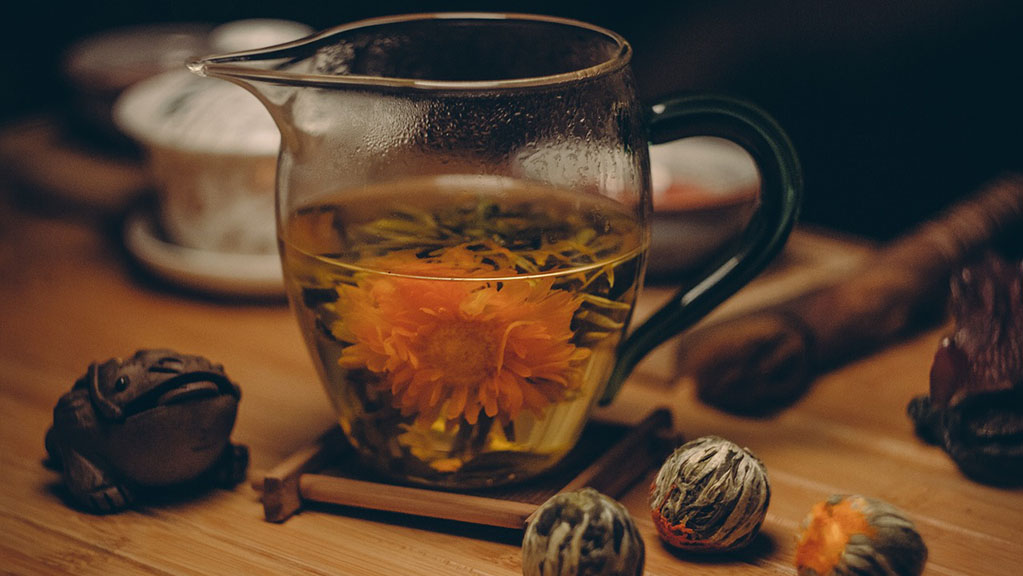Your cart is currently empty!

Can Chinese Teas Make Great Iced Tea? Exploring a Refreshing Frontier for American Tea Lovers
For many American tea enthusiasts, iced tea is synonymous with brisk black teas from India or Sri Lanka—think classic Lipton or Assam blends served over ice with lemon and sugar. Yet the world of Chinese tea, with its millennia-old traditions and astonishing diversity, offers untapped potential for crafting sophisticated and refreshing iced beverages. From delicate green teas to smoky oolongs and earthy pu-erh, China’s tea repertoire challenges the notion that iced tea must be a one-dimensional drink. This article examines how American tea lovers can reinvent their iced tea experience using Chinese varieties while gaining deeper appreciation for China’s tea culture.
Breaking the Hot Tea Stereotype
The common perception that Chinese teas are strictly for hot ceremonial consumption stems from cultural unfamiliarity rather than practical limitation. While China’s tea rituals emphasize temperature-specific brewing methods, this doesn’t preclude creative adaptations. In fact, China’s southern provinces have long consumed chilled tea variants during sweltering summers. The key lies in understanding how different tea categories interact with cold preparation methods.

Category-by-Category Exploration
1. Green Teas: Subtlety on Ice
China’s iconic green teas like Dragon Well (Longjing) and Bi Luo Chun, known for their vegetal sweetness and chestnut-like notes, make surprisingly elegant iced teas. Their lower oxidation levels preserve bright, grassy flavors that shine when chilled.
Brewing Tip: Use slightly stronger-than-normal hot brewing (175°F water, 3 minutes) to compensate for flavor dilution when ice melts. Add fresh mint or honeydew melon slices for a layered summer drink.
2. Oolong Teas: Complexity Unleashed
The semi-oxidized wonders from Fujian and Taiwan offer unparalleled versatility. Lightly oxidized Tieguanyin develops floral peachiness when cold-brewed overnight, while heavily roasted Wuyi Rock teas (e.g., Da Hong Pao) deliver caramelized depth perfect for bold, sugar-free iced tea.
Pro Tip: Use cold-brew methods for delicate high-mountain oolongs to avoid bitterness; hot brew then rapid chill works better for roasted varieties.
3. Black Teas : Beyond Sweet Tea
Yunnan’s Dian Hong black teas, with their honeyed maltiness and golden tips, create iced teas more complex than typical breakfast blends. For those who enjoy Southern-style sweet tea, try blending Keemun black tea’s wine-like richness with brown sugar syrup and a twist of orange.
4. White Teas: Delicate Chill
Silver Needle (Bai Hao Yin Zhen), composed solely of downy buds, yields a naturally sweet iced tea with hints of cucumber and melon. Its low tannin content makes it ideal for extended cold steeping without becoming astringent.
5. Dark Teas: The Adventurous Choice
Pu-erh’s earthy intensity might seem challenging for iced tea, but when balanced properly, it creates a uniquely satisfying drink. Try a 4-hour cold brew of ripe (shou) pu-erh with a splash of coconut milk for an iced “tea latte,” or mix raw (sheng) pu-erh with passionfruit juice as a palate-awakening alternative to sugary sodas.

Cultural Meets Contemporary Techniques
Traditional Chinese brewing wisdom enhances modern iced tea preparation:
- Water Quality: Use filtered water as recommended in Chinese tea texts—mineral-heavy water can distort delicate flavors when chilled.
- Leaf-to-Water Ratios: Adjust ratios based on tea density. For tightly rolled oolongs, use more leaves (1.5x typical hot brew quantities) to ensure full flavor extraction during cold steeping.
- Temperature Play: Experiment with hybrid methods—steep Phoenix Dancong oolong hot for 1 minute before adding ice to “shock” the leaves and intensify aroma release.
Addressing Common Concerns
Bitterness Issues: Unlike CTC-processed Western black teas, most Chinese whole-leaf varieties contain fewer tannins, reducing bitter over-extraction when iced. For green teas, avoid water above 180°F during initial brewing.
Pairing Potential: Match iced Chinese teas with foods beyond typical barbecue fare. Iced Jasmine Pearl tea complements spicy Asian salads, while iced Lapsang Souchong smoked black tea pairs brilliantly with grilled peaches and goat cheese.
The Case for Cold Brew Innovation
Cold brewing unlocks hidden dimensions in Chinese teas:
- Extended Steeping: 8-12 hour cold brews of Anxi Tieguanyin oolong extract creamy textures unseen in hot preparations.
- Layered Infusions: Try “double chilling”—steep green tea at room temperature for 2 hours, then refrigerate with fresh citrus peel for 4 hours.
- Sparkling Twists: Add carbonated water to cold-brewed Moonlight White tea for a naturally effervescent drink.

Market Trends & Opportunities
The U.S. premium ready-to-drink tea market, projected to reach $8.34 billion by 2027 (Grand View Research), shows growing appetite for sophisticated options. Chinese tea-based iced beverages could capitalize on trends toward:
- Clean Labels: No additives needed when using flavor-packed teas like Oriental Beauty oolong
- Functional Benefits: Highlight GABA oolong’s stress-reduction properties or pu-erh’s digestive benefits
- Experiential Consumption: Tie recipes to Chinese tea regions and histories

China’s tea spectrum doesn’t merely allow for iced tea—it revolutionizes it. By moving beyond the “English-style iced tea” paradigm, American enthusiasts can discover refreshing complexity through jasmine-scented green teas, mineral-rich oolongs, and transformative dark teas. The preparation process itself becomes a cultural bridge, blending Chinese tea’s ancient wisdom with modern mixology. As global tea culture evolves, embracing Chinese varieties in iced formats offers both a tribute to tradition and an exciting new frontier for innovation. Ultimately, the question isn’t whether Chinese teas can make good iced tea, but rather: which of China’s 2,000+ tea varieties will become your new summer staple?







Leave a Reply
You must be logged in to post a comment.